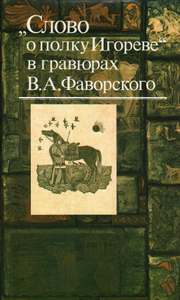
Moscow’s resident Lyubov Lukyanova donated books from the private collection of Semyon Shurtakov, famous author, prose writer and translator, to the lib
Semyon Shurtakov was born into a large peasant family in the village of Kuzminka of the Sergachsky district in the Nizhny Novgorod region on January 26, 1918. There were eight children in his family. Semyon’s father died when the boy was only 4 years old.rary of the Museum of Dionisy’s Frescoes. Among them there are a lot of illustrated albums about the Old Russian painting and architecture, Russian decorative and applied arts, albums with the works of outstanding artists, and others.
He went to the rural elementary school and then to the Sergachsky seven-year school of the kolkhoz youth. After leaving it, he worked in the collective farm “Worker’s Friend” and as a tractor driver and combine operator in the Sergachsky Machine and Tractor Station. At the beginning of 1937, he went to Moscow to continue his education. Semyon Shurtakov entered the Bauman Aeroclub in the capital, but didn’t complete his study because of the conscription. He participated in the Great Patriotic War – served in the Pacific Fleet in the rank of warrant officer till 1946.
The first short stories of Semyon Shurtakov were published in the naval newspaper. Later he entered the Maxim Gorky Literature Institute using them. He studied under K.G. Paustovsky together with Y. Bondarev, V. Soloukhin, Y. Vinokurov, V. Tendryakov, E. Asadov and G. Baklanov.
On graduating from the institute with honours in 1951, he worked in the publishing houses “Molodaya Gvardia”, “Sovetskaya Rossia”, and “Sovremennik”. His short novels were published in the Moscow’s magazines in the following years. His story “Difficult Summer” was issued in the publishing house “Molodaya Gvardia”.
In 1957, Semyon Shurtakov became a member of the Union of Writers of the USSR. He travelled a lot within the country and abroad. The following books became the literary result of those journeys: “A Trip to The Edge of the World”, “Three Springs in One Year”, “France at Close Range”, “Ancient Stones of Hellas”.
Semyon Shurtakov wrote over 30 books. In the 1960s and 1970s, he translated the works of writers from the national republics: Chuvashia and Yakutia. He worked with young authors for many years. He was a professor of the Literature Institute where he held a creative workshop of prose for more than 20 years.
Semyon Shurtakov was one of the initiators of the Day of Slavic Written Language and Culture in our country. He was a famous bibliophile in Moscow. The Central Library of Sergach was named after him. He devoted much effort and put up a lot of money to its opening.
The writer was awarded the State Prize of the RSFSR, the literary prizes named after K.M. Simonov, V.S. Pikul, N.M. Karamzim, A.P. Platonov; the Order of the Red Banner of Labour, the Order of the Great Patriotic War of the 2nd degree, the Order of the Badge of Honour, the Order of St. Sergius of Radonezh, the Medal for Battle Merit and others.
Semyon Shurtakov was an honorary freeman of Sergach in the Nizhny Novgorod region and Honoured Cultural Worker of the Chuvash Autonomous Soviet Socialist Republic and the Sakha (Yakutia) Republic.
He died on April 13, 2014, and was buried in his native village.







